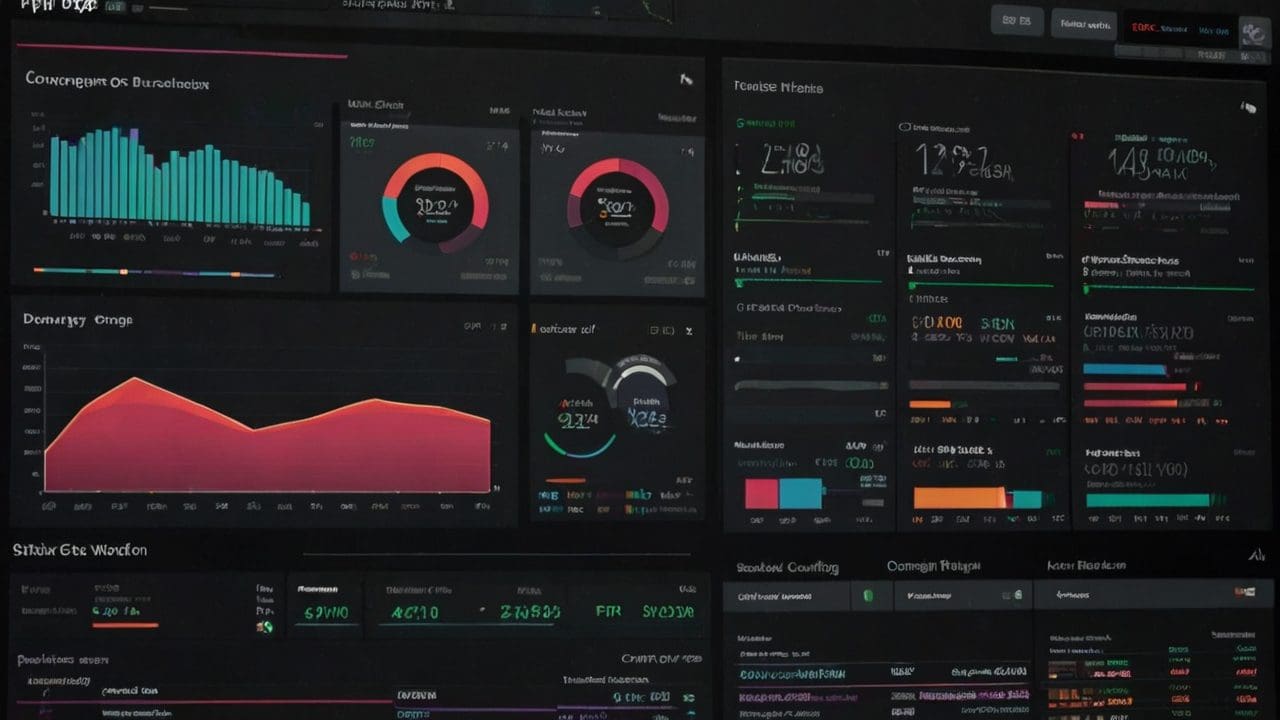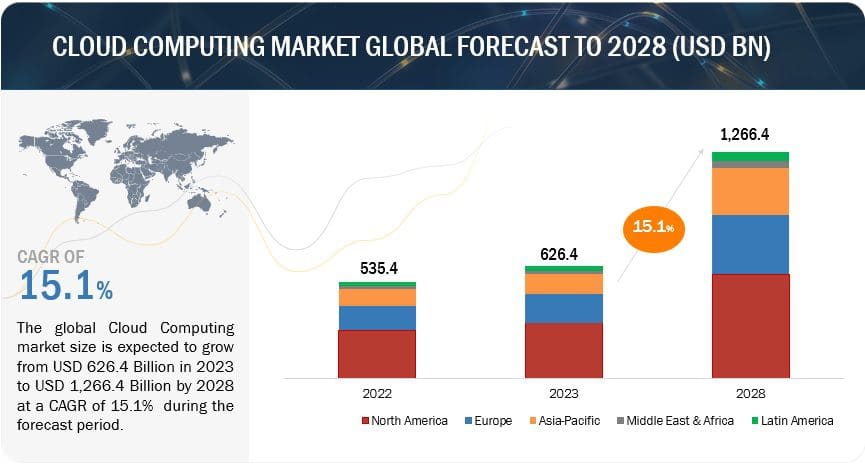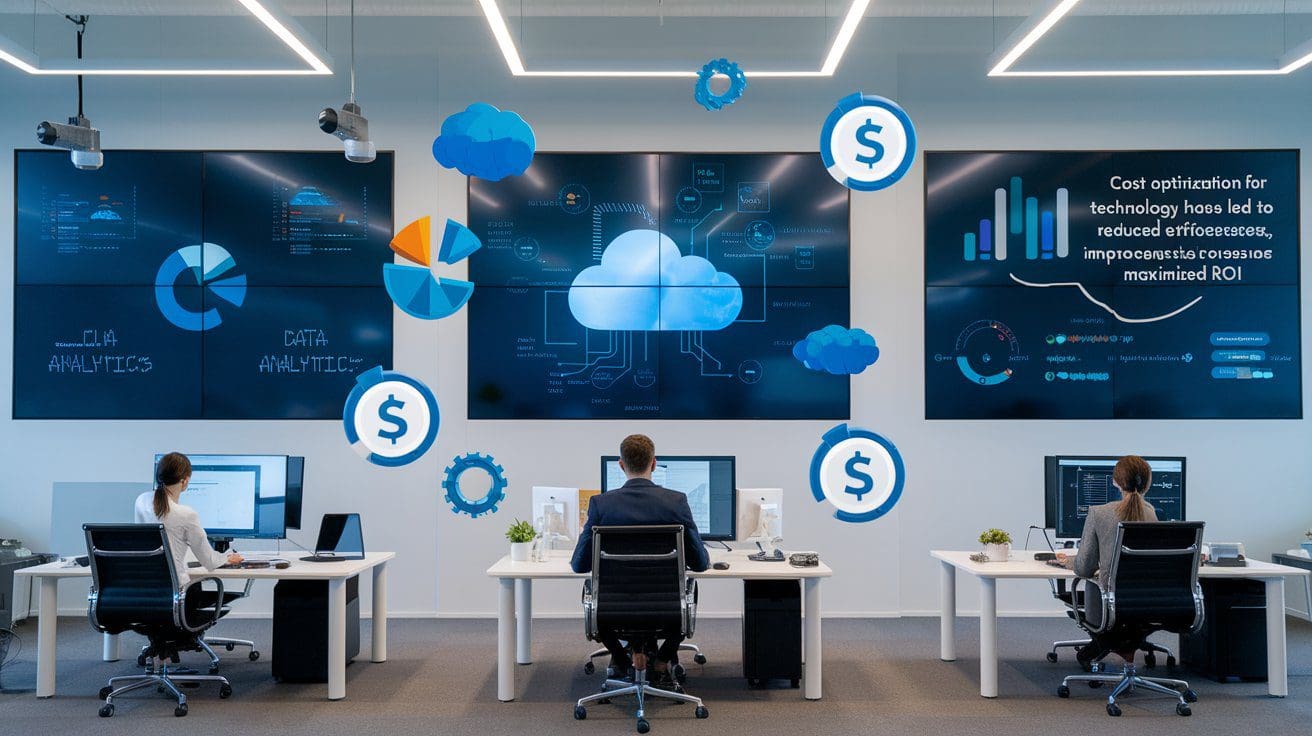Technology Cost Optimisation: Cut Waste and Boost Value
As a Technology Executive, I’ve always juggled the need to deliver technology solutions to enable the business and be fiscally smart when it comes to technology costs. The speed of digital change does not slow down, making it hard to pause and review technology costs. This rate of change can make it even harder to optimise technology costs as the business or market condition changes. Now, being a technology expert isn’t enough. We must also be smart business leaders, making sure our technology spending looks to the future and not to the past, all the while supporting and enabling the business strategy without just randomly cutting costs with no overall plan.
When times are tough, all eyes are on costs under technology or IT (as it usually is the biggest bucket of money) and in my experience, it is always seen as the go-to place to reduce costs even though the costs may sit with another part of the business and I just sign the cheques. In some cases, the decision to change the spend will be made outside of Technology and it may become a battle to change what that business unit is using.
In this article, we’ll look into how to manage your technology costs and align your technology budget with your company’s goals. We’ll cover cloud cost management and how to make sense of hardware and software investments. We’ll share practical tips to review your technology costs and get the most out of every IT dollar.

Key Learnings
- Understand the importance of comprehensive Technology cost data collection and analysis for making informed decisions.
- Discover how to identify cost-saving opportunities and optimise resource usage through data-driven insights.
- Learn strategies to enhance transparency, accountability, and cost awareness within your business.
- Explore ways to align your cost management practices with internal accounting standards and industry good practices.
- Gain insights into leveraging emerging technologies and frameworks to drive continuous cost optimisation.
The Pressing Need for Technology Cost Optimisation
In today’s tough economic times, technology leaders face many challenges. These include economic uncertainty, more competition, and the need to be sustainable. Keeping a close eye on the technology costs is key, especially when money is tight. Being financially prudent helps your company survive or grow, invest in new products, or start new projects.
Economic Uncertainty and Intensified Digital Transformation Efforts
Technology Leaders know that going digital is key to growing the business. But CEOs and CFOs want Technology Teams to do this in a financially prudent way. This means Technology must find ways to be fiscally responsible when investing in new digital projects or initiatives. Technology Teams and leaders must constantly manage and review costs and usage. This should ensure companies do not have to “bill shock” or incur unbudgeted expenditures.
The cloud computing market (Amazon, Google and Microsoft) is booming, expected to grow by 15.1% (CAGR) annually until 2028. This means cloud computing will become an even more integral part of a company’s technology stack and expenditure. Managing cloud infrastructure and costs well is crucial for Technology Leaders.

Optimising Technology costs means being responsive, accountable, and always checking your cloud computing costs. This constant review should be through your cloud computing native cost dashboard, or you may even be using a third-party FinOps dashboard (such as VMware’s Tanzu). By utilising these dashboards, companies can more effectively manage their cloud cost against technology budgets.
1. Strategies for Reducing Cloud Costs
Cloud computing is becoming more common, making it imperative for companies to manage their cloud costs to reduce unbudgeted expenditures. The ability to easily implement new services or infrastructure within the cloud can lead to unexpected costs if there are no processes or policies in place to govern usage. But, with smart strategies, companies can optimise their cloud costs through savings plans or reserved instances and therefore keep a handle on their cloud technology investments.
One effective strategy is to ensure you have a cloud architecture to ensure a consistent and secure cloud setup. Poor cloud management can cause companies to use too much storage or resources. By having a detailed cloud architecture, companies can match cloud use with their business goals. They can also use features like autoscaling, serverless functions and load balancing to use resources more effectively.
Cloud computing prices are also subject to changes, and this must be factored into any future technology budgets. Big cloud providers like AWS and Microsoft Azure are increasing their prices to pay for new technology and infrastructure investments. Technology Leaders must manage their cloud costs closely. One strategy might be that they could use a multi-cloud or hybrid approach to make the most of any discounts, already sunk costs or spot pricing while handling more complexity and business continuity.
FinOps is becoming more popular as a way to make the most of cloud use. FinOps helps companies cut unnecessary cloud use, streamline services, and use cloud-native options to spend less on the cloud. By using FinOps, companies have increased visibility and control over their cloud costs, usually through real-time dashboard reporting such as AWS Cost Explorer, Microsoft Cost Management, Appito Cloudability, Datadog or Vantage.

“By taking a strategic, holistic approach to cloud cost management, companies can unlock significant savings and ensure that their cloud investments are aligned with their business objectives.”
In summary, cutting cloud costs requires having and aligning to a cloud architecture, managing usage, and using FinOps. By doing these things, companies can better manage their cloud spending to reduce unexpected expenditures.
Struggling to control your skyrocketing cloud bills? FinOps Guide 2025: Master Cloud Cost Management Today
2. Optimising Support Costs and Exploring Consumption-Based Pricing
Constantly managing technology costs is critical, and support expenses are a big part of that. By looking at what support each system/product/application needs, Technology Leaders can look to reduce costs. This could include reducing support coverage from 24/7 to business hours only or insourcing/outsourcing internal support functions. Any changes to the support function must line up with business requirements and expectations.
Other examples could include reviewing systems that need the highest level of support to keep running without problems. But for systems that don’t have to run all the time, a lower support plan can be enough. This option saves money without sacrificing service quality.
Another potential option is to utilise consumption-based pricing, such as using cloud computing or a software as a service application, such as Adobe Creative Cloud or Visio. These plans cost a bit more per unit but can save money if you use less. These consumption-based services make it easy to match technology costs to what the business uses, giving more control over expenses.
By looking at what support is really needed and using consumption-based pricing, companies can optimise support and usage costs. Technology should be able to gain more control over its cloud expenses and other consumption-based services
3. Cost Management for IT Services and Outsourcing
Managing Technology services and outsourcing costs is key in today’s fast-paced business world. Technology leaders should check their agreements with outsourcers often. This helps find ways to cut costs and make Technology and services work better for the company.
Technology leaders can look for ways to save money by analysing vendor spending and comparing it to market standards or other similar organisations. They can also use benchmarking and skill set analysis. These methods help negotiate better deals, find savings, and make sure Technology and outsourcing services are worth the money they are being paid and are still fit for purpose in supporting the business and enabling its strategy.
Sometimes, doing some IT tasks in-house can be cheaper than outsourcing. It’s important to weigh the costs and benefits of both options. This way, companies can make choices that fit their business goals, strategy and budgets. What was the right option two years ago may not be the right one to support the company strategy now and over the next few years.
Using the right tools and strategies, companies can make their technology services and outsourcing more efficient. This leads to better Technology services cost optimisation and outsourcing cost management.
4. Addressing Technical Debt and Legacy Systems

Companies and Technology teams must, wherever possible, look to Technology costs (without compromising service or availability) and drive digital change. They’re also tackling the big issue of technical debt and legacy systems. Technical debt happens when quick fixes are chosen over lasting solutions. We all know as Technology Leaders that a temporary solution can quickly become production-ready. This technical debt, which should have a cost associated with it, can make it very hard for companies to adapt and innovate in a digital world.
Identifying and Addressing Technology Debt
Technology Leaders must first figure out how much technical debt their company has. They need to look closely at their technology to find where old systems and outdated technology are holding them back. By showing the board a clear picture of the debt, both from a risk and cost perspective, Technology Leaders should get the support they need to fix these problems.
Modernising legacy systems is also key to cutting down technical debt. This might mean making software code easier to read and maintain, updating old technology or putting an integration layer in between the new and legacy systems. From a software perspective using continuous integration and deployment (CI/CD) helps too. It lets software teams quickly test and roll out changes, reducing debt.
| Strategies for Addressing Technical Debt | Benefits |
|---|---|
| Refactoring code | Improved readability, maintainability, and scalability |
| Modernising the technology stack | Reduced technical debt, improved performance, and enhanced security. Aligning with architecture, this could be taking a hybrid or fully cloud approach. |
| Implementing CI/CD practices | Quick testing and deployment, reduced integration challenges |
| Fostering a culture of continuous improvement | Proactive measures to enhance the software system and prevent new technical debt |
By tackling technical debt and updating legacy systems, companies can open up new cost optimisation opportunities and increase agility and the pace of innovation. This approach may also help with staff retention and engagement.
5. Rationalising Hardware and Network Spending
Many Technology groups potentially spend more on hardware and networking than is required by the business. Regular checks on Technology spending can find hidden costs, like unused software licenses, higher-spec switches or redundant services. Often, companies pay for networks that are not used anymore, as we have just rolled over contracts from one year to the next. Billing mistakes going unchecked with vendors and suppliers, too many software licenses, and changes in business requirements can also cause high Technology costs.
Identifying and Eliminating Unused or Redundant Resources
To make Technology spending smarter, Technology Leaders should act early:
- Ensuring each Technology service has an owner responsible for understanding costs, budgets and requirements;
- To fully understand Technology contracts and services provided, especially Telco contracts;
- Do a full check of all Technology assets and services to find unused or extra resources.
- Check network circuits and services to cut inactive ones or those that are surplus to requirements.
- Investigate the use of a central IT asset management system to keep track of all technology investments.
- Have a plan for hardware consolidation and any potential replacement with a long-term roadmap to utilise a hybrid, cloud or new on-prem technology.
- Have a plan to regularly check and improve spending on hardware, software, and networks.
By being proactive in hardware and software cost optimisation and network spending optimisation, companies can potentially save up to 15% per annum. Technology Leaders can make sure their technology investments match the business’s real requirements and that costs are clearly articulated based on these requirements. As we know, some business requirements want a “gold-plated solution” but do not realise the cost implications of this decision, when a “bronze” solution might be good enough. It’s our job as Technology Leaders to articulate this to the business.
“Strategic money management is key for digital transformation. Technology Leaders must see rationalising technology spending as a key goal for the whole Technology team as part of any continual service improvement.”
6. Cost Management for Application and License Rationalisation
In today’s fast-changing business world, managing software costs is key. As companies go digital, they use more software, leading to big cost issues. Application and License rationalisation is a key strategy to cut software costs and save money.
This process means going through cataloguing and then getting rid of duplicate software to lower costs. But it can be hard because of shadow IT and buying in silos using a company credit card, which can bring in unwanted software. Mergers and acquisitions can also add more software that overlaps.
Finding out the total cost of each software is a big challenge. Not having clear plans to retire software can keep “zombie apps” alive, wasting resources. Not working with business partners can also make it harder to succeed in cutting costs.
To overcome these issues, Technology Leaders need a proactive plan. This includes:
- Doing a deep check of all software to find what’s not needed or has a big uptake;
- Look at how software licenses are used and stop paying for unused ones.
- Figuring out how each software helps the business.
- Calculating the full cost of each software, including hidden costs;
- Matching software costs and usage with business goals to see the technology’s return on investment;
- Choosing which software to rationalise, based on cost savings, usage and impact on the business.
By making the application and license list leaner through rationalisation, companies can save a lot of money. However, making application and license rationalisation work depends on a collaborative approach across the company. If business partners don’t care, it can slow things down. It’s key to talk with them about costs and show how a leaner software list helps everyone, especially if there are multiple software applications doing the same thing and providing similar outcomes to the business.
7. Innovative Approaches to IT Cost Optimisation
Companies are now tackling the digital world’s challenges with a new way of thinking. They’re breaking down Technology projects into smaller, manageable parts. This helps avoid cost overruns and delays. Working with finance and procurement teams early makes the process smoother, brings new ideas to the table and enables a more company-wide approach. This could lead to reducing overall costs when purchasing and reviewing software or hardware. However, with whatever approach you take, it is important to understand previous technology spending as well as any future budgets; this way, we can get a clear picture of any trends, and it’s always a good idea to follow the money.
FinOps is also changing the game by enabling data-driven decisions in cutting costs. It helps by reducing cloud waste, simplifying services, and using cloud-native solutions. This leads to better control over these Technology expenses and cloud investments.
Leveraging Frameworks and Good Practices
The use of cost optimisation frameworks is not consistently followed, showing there’s room for improvement. But those who do see big benefits. For example, ProsperOps helps reduce costs by shortening commitment terms and increasing discounts. It allows teams involved in FinOps to focus on making the most of cloud resources and computing.
Other methods are also being explored to cut costs. The Innovative Cost Optimisation Method is a step-by-step process. It starts with setting goals and ends with making plans.
| IT Cost Optimisation Frameworks | Key Benefits |
|---|---|
| FinOps | It gives visibility of cloud costs, enabling data-driven decisions. Also helps to eliminate unnecessary cloud usage, streamline needed services and adoption of cloud-native services. |
| Innovative Cost Optimisation Method | Structured approach to identifying and implementing cost-saving initiatives: 1. Eliminating discretionary IT spending 2. Reducing operational and project spending 3. Proposing digital business initiatives |
| Tactical Approach | 1. Application and License Rationalisation 2. Rationalising Hardware and Network Spending 3. Cost Management for IT Services and Outsourcing 4. Optimising Support Costs 5. Cloud Costs |
By adopting these new strategies and good practices, companies could reduce technology costs. This puts them in a strong position for success in the fast-changing digital world.
Managing technology costs never stops
In my quest to manage technology costs and support digital growth, I’ve used many strategies. I have cut cloud costs by focusing on actual services needed and implementing reserved instances or savings plans. I also optimised support and outsourced or insourced where required, tackled technical debt, and streamlined hardware, software, and network resources.
This approach has helped me free up funds for new, innovative solutions or to just help companies be more profitable.
Reflecting on this journey, I see how crucial managing technology costs is for success. It lets us adapt and thrive in a fast-changing digital world. By keeping a constant eye on costs, I’ve saved money for big projects or reduced operating expenses for increased profitability.
The work in managing technology costs never stops. It needs constant effort, flexibility, and a readiness to adopt new practices. I plan to keep improving my methods and following the latest trends. This way, I can keep finding the funds needed for new initiatives and stay ahead of the competition.
Ready to Cut Your Tech Spend Without Cutting Value? Start applying these strategies today—and explore more ways to make your IT budget work smarter, not harder.
Drop me an email at pete@livingthetech.com if you need me to review and make recommendations on your current technology costs and associated supplier/vendor contracts, or to discuss this article further.

